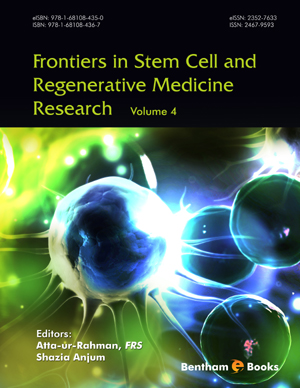Abstract
Epimorphic regeneration is a process by which damaged tissues or severed body parts are restored to the original. This type of sophisticated regeneration is observed in urodeles and fetal mammals. For example, through this process, an amputated limb of a salamander can be restored, by re-growing an exact replica, irrespective of its age. During limb epimorphic regeneration: committed mesenchymal cells at the stump site dedifferentiate, forming a cluster of heterogeneous population of stem cells, known as the blastema. Upon blastema integration, positioning and expansion, constituent cells embark on redifferentiation and remorphogenesis to restore the lost appendage. Similar to epimorphic regeneration is retrodifferentiation in human leukocytes. In response to ligation of monomorphic regions of MHC class II antigens with monoclonal antibody CR3/43, human leukocytes retrodifferentiate into a variety of heterogeneous stem cell types belonging to the mesoderm, ectoderm or endoderm lineage, depending on culture media and conditions. During this process, leukocytes lose lineage-associated markers home and undergo homocytic aggregation, upregulate expression of stem cell antigens, and subsequently redifferentiate to give rise original tissue or, transdifferentiate into a different tissue altogether. The hematopoietic retrodifferentiated stem cells have been shown to engraft an animal host in two proofs of principle clinical studies, demonstrating long-term engraftment and safety in acquired aplastic anaemia, while transient amelioration of beta thalassemia major was also observed. Binding of MHC class II antigens on leukocytes with the monoclonal antibody CR3/43 appears to emulate stress and injury in human tissue in vitro, similar to limb amputation in salamander. The ease by which various stem cell types can be generated from human peripheral blood has allowed the design of various kits to guarantee the specificity, sterility and efficacy of stem cells production for various clinical and research applications. The robustness and efficacy of the retrodifferentiation process in generating unprecedented quantities of stem cells belonging to the three germ layers will enable organ and tissue reconstruction ex vivo, using bio-printing and various scaffold materials. Epimorphic regeneration and retrodifferentiation both have the capacity to recreate and reconstruct tissue with precise positional integration of cells in such a way that will enable us to heal without scars and to understand how to maintain tissue integrity and architecture in the face of a hostile environment.
Keywords: Axolotl, Bioprinting, Blastema, Bone, Dedifferentiation, Ectoderm Endoderm, Epimorphic Regeneration, Hematopoietic, Hepatocytes, Histogenesis, Human leukocytes, Mesenchymal, Morphogenesis, Neurons, Pluripotent, Positional integration, Regeneration, Retrodifferentiation, Salamander, Scaffolding, Stem Cells, Tissue Repair, Transdifferentiation.






















